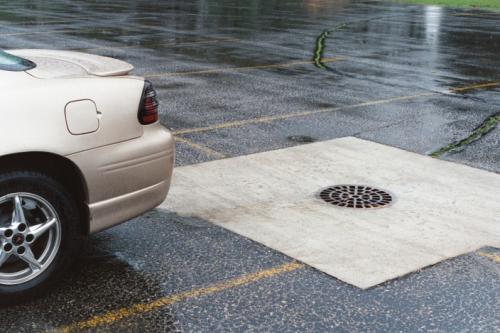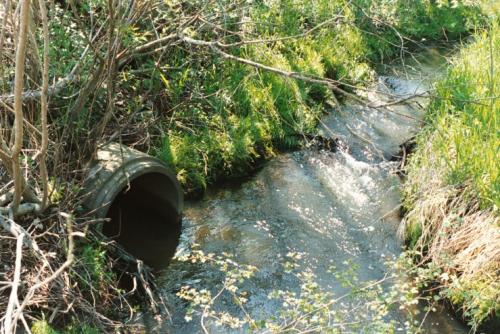Science ideas for young children: Where did the water go? Part 8
Teach young children about nature & science by following water as it moves through the water cycle. You can learn how your actions help or hurt our environment.
This article is from a series of science activities on the natural world that anyone can conduct with children. This can be done within a family, in a daycare setting, as part of school activities, a 4-H Club or with any group working with young children.
It’s springtime and Michigan is being rained on. While we might not like mud on our floors and floods in our basement, April showers not only bring May flowers, but they replenish water in our lakes and our groundwater. The falling rains can also be used to teach science to young children. Kids enjoy going out in the rain, and this is a chance to feed on their curiosity while outdoors. Here is an idea Michigan State University Extension suggests you try.
Follow that water! As water flows down your driveway or through your yard, watch where it goes. It will usually go to one of a few places:
driveway or through your yard, watch where it goes. It will usually go to one of a few places:
- Sometimes, the water gets “soaked up” by the soil. Water moves through different soils at different speeds. Reach down and play in that mud. Does it feel gritty or sandy, or does it feel sticky and clay-like? Sandy soils tend to let water move through faster. Clay soils tend to cause water run-off over the top of the ground. The amount of rain received in the past few days can also affect how much the ground can “soak up.”
- Sometimes water collects in mud puddles or other low lying areas in the yard. This is more likely to happen in places with clay soils. How long does the water stay there? Is it for just a few days or until mid-summer? These small pools, especially if they hold water for several weeks can be important breeding areas for frogs, salamanders and insect life. The small collecting areas can also be where water slowly seeps into the groundwater and you may end up drinking it from a well or it might flow into nearby lakes and streams. Water that moves slowly through the ground is usually cooler, cleaner and better for fish. You can build a rain garden to encourage this. More information can be found in Rain Gardens manual.
- Does the water go to a nearby body of water,
 such as a ditch, creek, stream, pond or lake? Every body of water has an area of land surrounding it, called a watershed. When it rains in the watershed, the water moves either above ground or below the ground to a nearby lake or stream. Water always flows downhill. So does everything in the water, such as oil from your car that needs to be fixed, dog poop, and lawn or garden fertilizer. You can help the environment by fixing your car, properly disposing of your dog’s waste, and fertilizing appropriately according to a soil test. One of the biggest pollutants in Michigan waterways is sediment. Sediment is another name for dirt. This sand and silt can wash into lakes and streams and make them cloudy. It can cover up places where fish lay their eggs or where insects (which the fish eat) like to live. By making sure areas around your property are planted with grass or other plants you can protect the environment.
such as a ditch, creek, stream, pond or lake? Every body of water has an area of land surrounding it, called a watershed. When it rains in the watershed, the water moves either above ground or below the ground to a nearby lake or stream. Water always flows downhill. So does everything in the water, such as oil from your car that needs to be fixed, dog poop, and lawn or garden fertilizer. You can help the environment by fixing your car, properly disposing of your dog’s waste, and fertilizing appropriately according to a soil test. One of the biggest pollutants in Michigan waterways is sediment. Sediment is another name for dirt. This sand and silt can wash into lakes and streams and make them cloudy. It can cover up places where fish lay their eggs or where insects (which the fish eat) like to live. By making sure areas around your property are planted with grass or other plants you can protect the environment. - Sometimes the water goes into a storm drain. Some people think that the water in storm drains go to a wastewater treatment plant and gets cleaned, but in most cases, it goes directly to the nearest lake or stream. Those storm sewers are the headwaters of our Great Lakes. Anything that goes into the storm drain, whether it is motor oil dripping from cars, dog poop, cigarette butts, or road kill, it will make its way into our streams, and eventually to the Great Lakes. It is weird to think about it, but if you have a storm drain in front of your house, you have waterfront property. You can “adopt” a storm drain near where you live and make sure it is kept free of litter and debris.
Hopefully these ideas will get you to go outside and watch the water flow!



 Print
Print Email
Email


